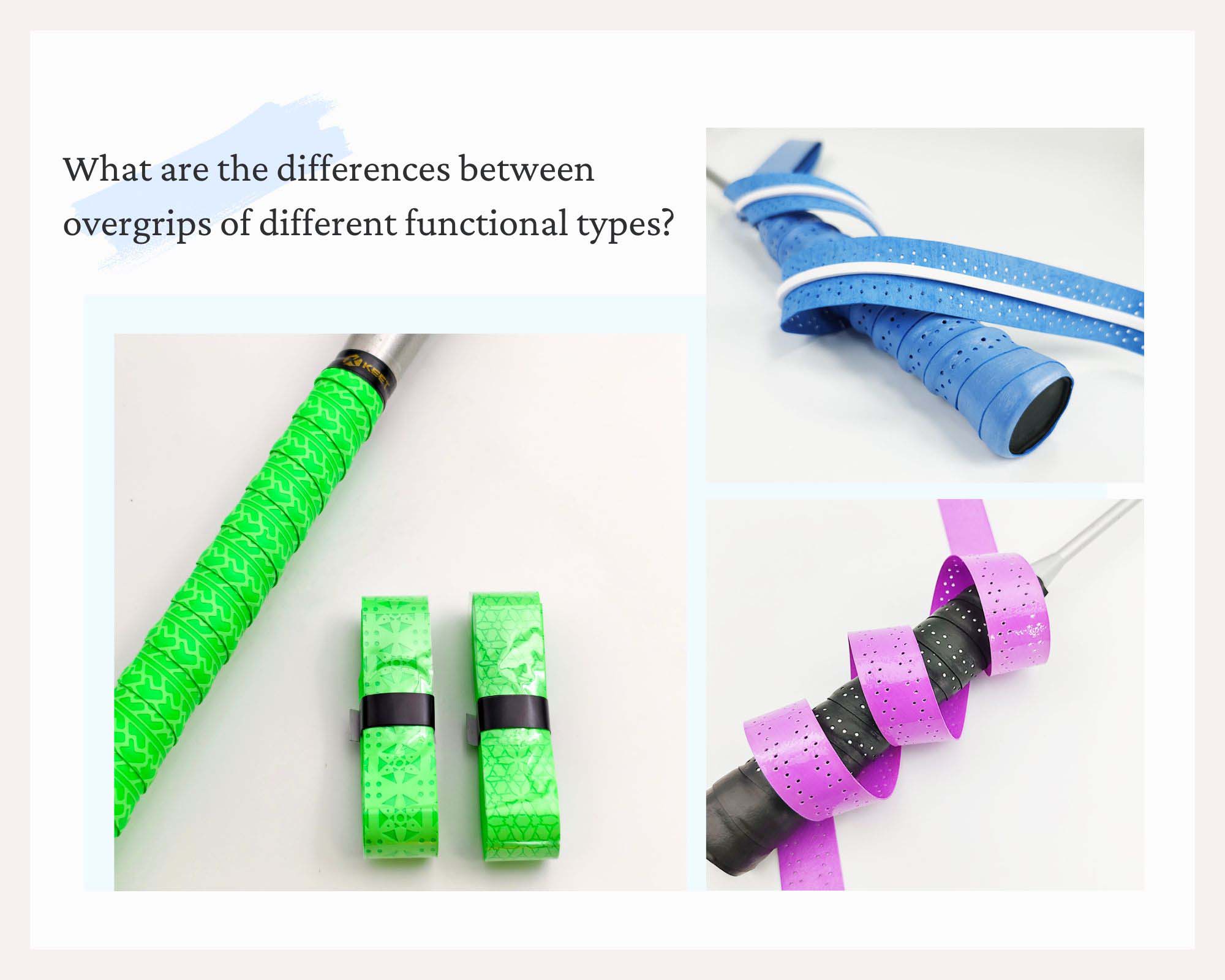What are the differences between overgrips of different functional types?
Oct 17, 2025
In badminton, overgrips serve as a critical accessory connecting players to their rackets, with functional differences directly impacting hitting stability, athletic comfort, and health protection. Classified by core functions into non-slip, shock-absorbing, and breathable types, these overgrips exhibit significant disparities in material design, usage scenarios, and target user groups. This article analyzes these differences from two dimensions—functional characteristics and user demand alignment—to help customers accurately select suitable overgrips.
1. Non-slip overgrips: precision control and stability assurance.
The primary design goal of non-slip overgrip is to optimize grip stability through surface friction enhancement. Typically crafted from PU material, these overgrips feature micro-convex particles or keel to create physical anti-slip structures. Even during intense rallies with sweaty hands, they maintain a firm hold. Their advantages are twofold. Firstly, action precision: anti-slip textures reduce displacement errors caused by racket slippage during strokes, making them ideal for technically skilled players requiring fine ball control. Secondly, broad applicability: from beginner practice to professional competitions, these overgrips deliver consistent performance. However, their relatively rigid grip feel may be less favorable for players seeking delicate tactile feedback.
2. Shock-absorbing overgrips: impact mitigation and health protection.
Shock-absorbing overgrips focus on reducing vibrations transmitted to joints during ball impact through material structure design. These overgrips often adopt multi-layer composite constructions, with EVA foam as the base layer and a non-slip PU top layer to effectively disperse impact forces. Their core advantage lies in athletic health protection: using shock-absorbing overgrips can reduce wrist vibration intensity by over 30%, significantly alleviating post-game hand soreness, particularly suitable for high-frequency hitters or power players. Additionally, they minimally affect racket balance points, appealing to technique-oriented players. However, a trade-off exists between shock absorption and durability—some high-elasticity materials may compress over time, diminishing performance. Replacing overgrips every 20 hours of intense training is recommended to maintain optimal protection.
3. Breathable overgrips: dry comfort and long-lasting performance.
Breathable overgrips address hand perspiration issues through material innovation and structural design, prioritizing sweat evaporation and airflow. Typically made from perforated PU with 0.5–1mm ventilation holes, they create air convection channels to reduce hand humidity, maintaining dryness even during prolonged play. Their advantage lies in long-term comfort: breathable structures prevent sweat-induced slippage, making them ideal for high-temperature environments or players with heavy perspiration. These overgrips also offer better cost efficiency, with replacement cycles 1.5 times longer than standard overgrips. However, their sweat absorption capacity is relatively limited, and their design leans more toward advanced players, with casual users potentially less sensitive to their benefits.
Therefore, when choosing overgrips, the principle of "function-first" can be followed:
· Beginners or players prone to racket slippage: opt for keel non-slip overgrips to quickly build confidence through physical anti-slip structures.
· Power players or high-frequency hitters: prioritize shock absorption with EVA+PU composite overgrips.
· Hot environments or heavy sweaters: choose breathable overgrips paired with antiperspirant bands for dryness and grip security.
The essence of overgrip selection lies in aligning athletic needs with technical characteristics. Whether advanced players pursuing ultimate ball control or amateur enthusiasts prioritizing health protection, understanding the core distinctions among functional overgrip types enables competitive advantages through attention to detail.

 Network Supported
Network Supported